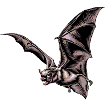Museum, University of Nebraska State

University of Nebraska State Museum: Mammalogy Papers
Document Type
Article
Date of this Version
February 1993
Abstract
Nebraska is characterised as a critical juncture for distributional ranges of mammals from northern, southern, eastern, and plains faunal elements. As might be expected, ranges have not remained static since the benchmark survey done by Jones, 1964. We have evidence that 10 of about 80 species of mammals found in the Platte River Valley have expanded their ranges. Opossum, red bats, bog lemmings, white-footed mice, woodchucks and least weasels are further west in the state, and grasshopper mice are further east in the state. Elliot's short-tailed shrew, cotton rats and armadillos are further north in the state. We have the northernmost specimens of armadillos ever recorded in the United States. These new records may be attributed to better sampling, but there is also good evidence that vegetation has increased along the rivers in the state. Especially on the move are those mammals associated with woodlands. These can be expected to expand into the riverine forests where they develop within the dispersal range of an existing population.


Comments
Project funded 1991 by the U.S. Fish and Wildlife Service – Grand Island, Nebraska.